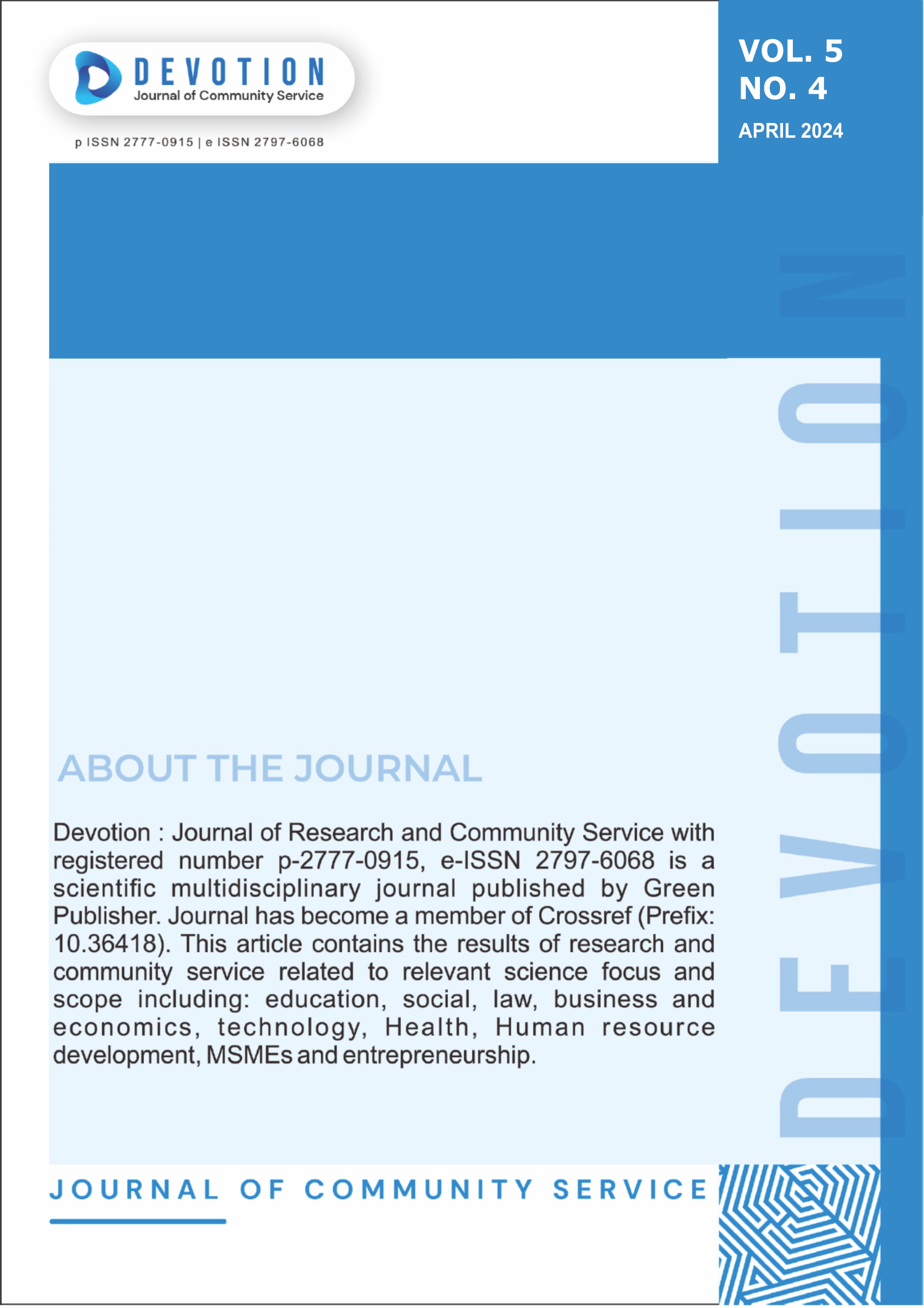Comparison of Tiktok Application Users Between the Implementation of Creativity and Addictive Behavior
DOI:
https://doi.org/10.59188/devotion.v5i4.714Keywords:
addictions, creativity, social media, TikTok, TikTokersAbstract
TikTok application users have now reached all levels of society, especially teenagers who use the TikTok application as a medium to express themselves. Teenagers who access TikTok are considered to have the opportunity to use creative abilities in creating content on TikTok, but the Tiktok application, in fact, will also have a bad impact on individuals, especially teenagers who are still very unstable. Tiktok can have a negative impact where it makes its users more and more addicted every day. This study aims to understand and analyze the implementation of creativity and addictive behavior of TikTok users. Implementation using Torrance Test of Creative Thinking (TTCT) and addictive behavior using Bergen Social Media Addiction Scale. There are four aspects of creativity, namely fluency, flexibility, elaboration, and originality. While addictive behavior there are aspects of importance, tolerance, mood swings, withdrawal and relapse. The method used is quantitative descriptive, to find out more between creativity and addiction that TikTok users use. Based on the findings, 85% were able to implement their creativity on the TikTok application with the biggest aspect lying in the flexibility in utilizing the ability to identify problems or provide solutions to their problems by utilizing the features and visualizations available on TikTok. As for addictive behavior, it was found that 75% of addictive behavior existed, with the largest dimension in mood swings, this is because TikTokers are looking for fun and entertainment to forget for a moment about the problem.
Downloads
Published
Issue
Section
License
Copyright (c) 2024 Aisyah Mujahidah Risalah, Nofha Rina

This work is licensed under a Creative Commons Attribution-ShareAlike 4.0 International License.
Authors who publish with this journal agree to the following terms:
- Authors retain copyright and grant the journal right of first publication with the work simultaneously licensed under a Creative Commons Attribution-ShareAlike 4.0 International. that allows others to share the work with an acknowledgement of the work's authorship and initial publication in this journal.
- Authors are able to enter into separate, additional contractual arrangements for the non-exclusive distribution of the journal's published version of the work (e.g., post it to an institutional repository or publish it in a book), with an acknowledgement of its initial publication in this journal.
- Authors are permitted and encouraged to post their work online (e.g., in institutional repositories or on their website) prior to and during the submission process, as it can lead to productive exchanges, as well as earlier and greater citation of published work.













